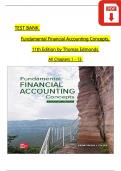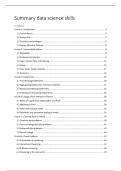Tentamen (uitwerkingen)
Fundamental Financial Accounting Concepts, 11th Edition TEST BANK by Thomas Edmonds, Verified Chapters 1 - 13, Complete Newest Version
- Vak
- Instelling
Fundamental Financial Accounting Concepts, 11th Edition TEST BANK by Thomas Edmonds, Verified Chapters 1 - 13, Complete Newest Version TEST BANK For Fundamental Financial Accounting Concepts, 11th Edition by Thomas Edmonds, Verified Chapters 1 - 13, Complete Newest Version TEST BANK For Fundamental...
[Meer zien]




